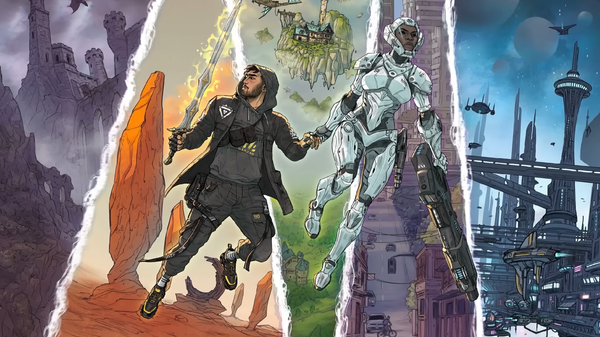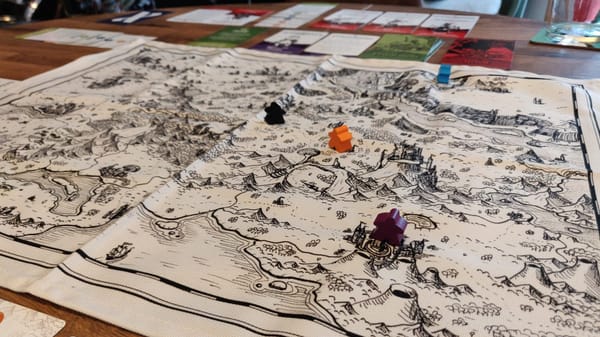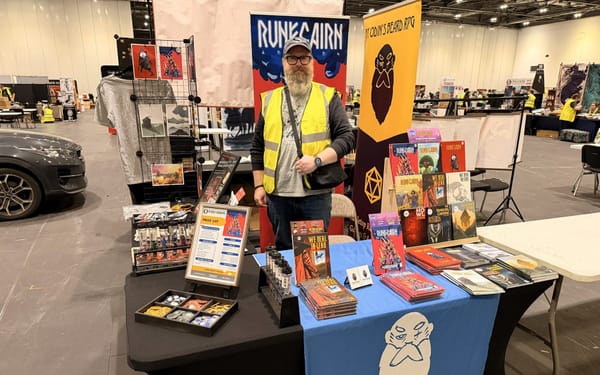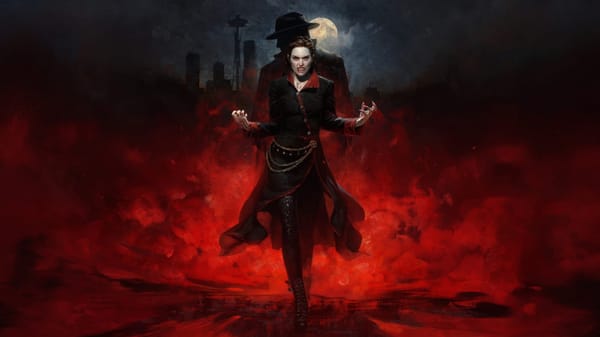EXCLUSIVE: Fight for your name on the Streets of Jade
James Mendez Hodes and Fonda Lee discuss the nuances of adapting the bestselling Green Bone Saga for a tabletop RPG.

Fonda Lee is best known for her trilogy of books Jade City, Jade War, and Jade Legacy. The Green Bone Saga includes this trilogy plus a book of short stories (Jade Shards) and a novella (The Jade Setter of Janloon). For years, fans have been asking her if she would consider creating a tabletop RPG adaptation of her work that lets them tell their own stories of crime, family, and magical martial arts.
Today, Rascal can announce that Evil Hat is publishing the tabletop roleplaying game, Streets of Jade, written and designed by James Mendez Hodes and Fonda Lee, based on Lee’s bestselling Green Bone Saga. They are currently open for playtesters. The rules are based on the Paragon system, derived from Agon by John Harper and Sean Nittner, and dives deep into Kekon and its neighboring countries, allowing for a culturally rooted and explosive fantasy game.
Rascal was able to chat with both Mendez and Lee in an exclusive hour-long interview discussing Streets of Jade, where we talked about cultural interpretation, worldbuilding, what the fans have to look forward to, the way that combat is framed as a fight against a systemic power, and how jade is its own form of privilege.
This interview has been edited for length and clarity.

Lin Codega: How did you two link up and decide to create the game?
Fonda Lee: Years ago, just before Jade Legacy came out, I started getting quite a lot of comments from readers and gamers saying that the world of the Green Bone Saga should be a TTRPG. I had just started playing Dungeons & Dragons with a group of friends in Portland. I was very new to gaming but I loved the idea of having the world be a sandbox that other people could come and play in.
It so happened I had recently been on a podcast with a couple of game designers and writers, Eli Kurtz and Eric Farmer who run a small games development company called Mythic Gazetteer. After our initial chat I kept in touch, and as we were talking, they asked about adapting the Green Bone Saga into a TTRPG, and I was all for it. During that development process, they both realized, ‘hey, we are both white men who need more cultural context and we need to bring other voices into this project.’ That's when they reached out to [James Mendez Hodes] and said they’d like to have him come on and consult.
At this point, we were also in contact with Evil Hat. It turned out that Sean [Nittner] had read the Green Bone Saga books and was on board with our ideas. But he couldn’t make an offer until he saw a draft of the full game. After that we would connect with him at various intervals to show him where we were at with the game design process. After about two and a half years Eric and Eli felt like they had taken it as far as they could. They submitted their version to Sean and he said there was lots of good stuff, but he didn’t think that it was quite right for Evil Hat. He gave some additional development steps and Eric and Eli had both reached the end of their runway as far as the time and investment that they could put into it. They stepped away from the game, but said they’d love to see it continue to move forward.
That’s when I got on a call with Mendez to talk about what we should do now. And very, very fortunately – and I'm very grateful for this – he said he was going to take it and run. He had all these ideas for what he was going to do with it. The first thing he said he would do would be to change the system.
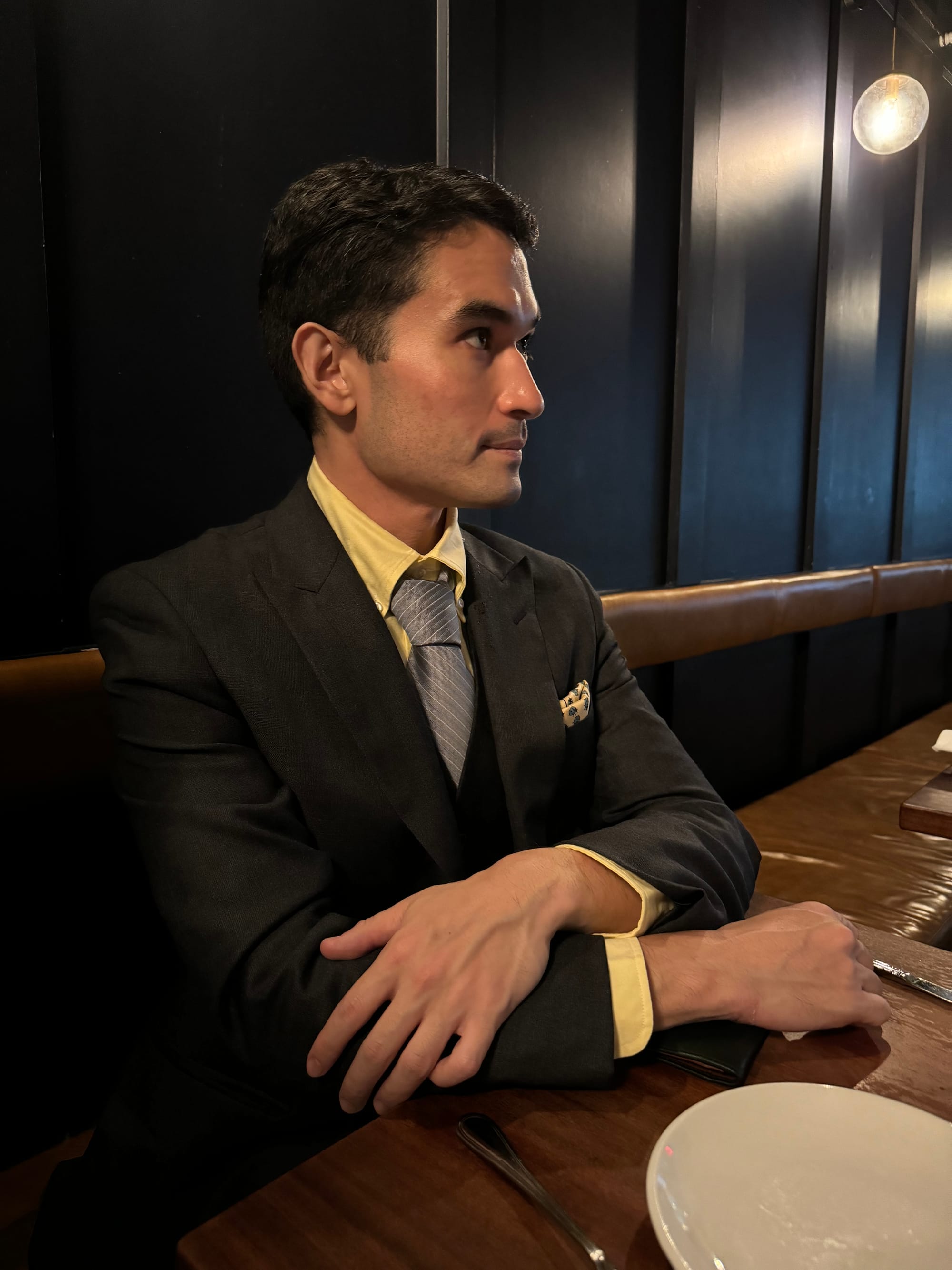

L to R: James Mendez Hodes and Fonda Lee
James Mendez Hodes: It used to be a Forged in the Dark design. On its face, Blades in the Dark seems like it would be a much better match for the Green Bone Saga than Paragon, right? Blades in the Dark is a crime game, it has faction rules, it has rules for gangs, but it didn't work as well as we thought it would.
I remember we had an early conversation about how the game was going and I commented that in the books every time something goes wrong, it's because one of the main characters has to roll their skills as dice instead of getting a predicted outcome. When [a main character dies] in book one it’s because they’re put in a situation where they’re alone, they’re not with their faction, and they have to roll their own skills as dice. And that means that they are more likely to get a bad roll and they do.
Codega: The books have been out for a decade. Do you really want me to make this a spoiler free interview?
Mendez: Do not include their name in the interview.
Codega: Oh, my god.
Mendez: So, like I said, that means that they can get a bad roll and they do.
Paragon is highly swingy, with a wide range of expected results. Even though it doesn’t have a faction system built in, after I was able to design that part of the game everything just came together. Changing the system was the biggest adjustment we made, but the core of the game still worked. Everything since then has been refinement.
Codega: Thank god John Harper only publishes one game every three-to-five years or no one would be in business. He's so good at it.
Lee: [laughing]
Codega: The framework of Blades in the Dark lends itself to a kind of selfishness within the characters that maybe doesn't quite mesh well to the mores and culture of the Green Bone Saga.
Lee: As someone relatively — very — new to both of these systems I could tell that there was a tonal shift between the first version that leaned more heavily into the crime elements and the mission-based game loop. Paragon placed more of the emphasis on the interpersonal relationships and the factions that were developed in the redesign, which I think is more true to the spirit of the trilogy as a whole.
Codega: What are you excited for the fans to see within the game?
Lee: Everything. Selfishly, I'm just always so excited to see more of the world fleshed out with artwork. Even seeing the initial drafts of the layout has been very cool. I think one of the joys of this process has been seeing the contributions from other writers who take little parts in the margins of the trilogy and blow them up. I did not really appreciate this fully when this process began. I spent so much of my mental energy and my creativity on the central storyline of the Kaul family and Janloon and jade and Kekon. And then one of the playtesters will say, ‘I want to play that creepy secret agent from Ygutan who eats jade.’ Now you've got to develop this whole other addendum to the sandbox for them to play in. I'm really excited to see people take those little things and run with it.
Mendez: As a funny detail, as we brought on contributing writers, a lot of them are experiencing the shock of discovering that almost all of our players are Mountain loyalists.
Codega: Can you blame them?
Lee: [Laughing.]
Mendez: True, I just tell them about Ayt Mada and everyone's like, ‘cool, I do not want to be her enemy. We're joining the Mountain.’
Lee: Delighted and horrified by this.
Codega: I'm not surprised at all.
Jade is privilege. Privilege looks like a family facility and training and resources. Jade intersects with many, many, different identities in a literal way.


